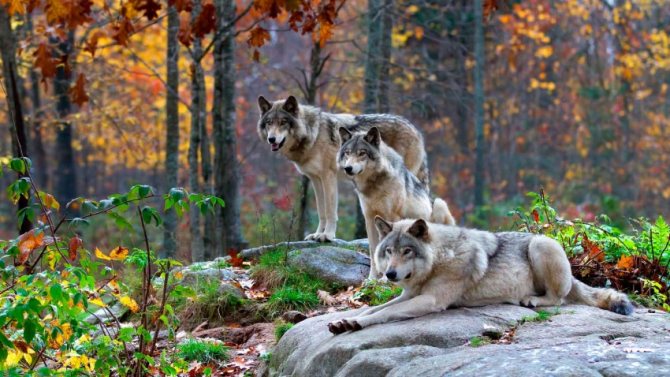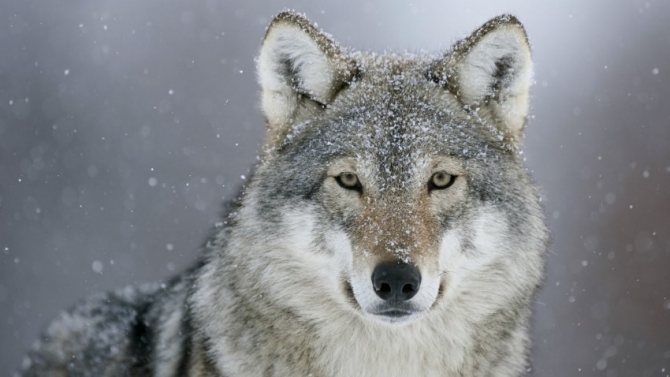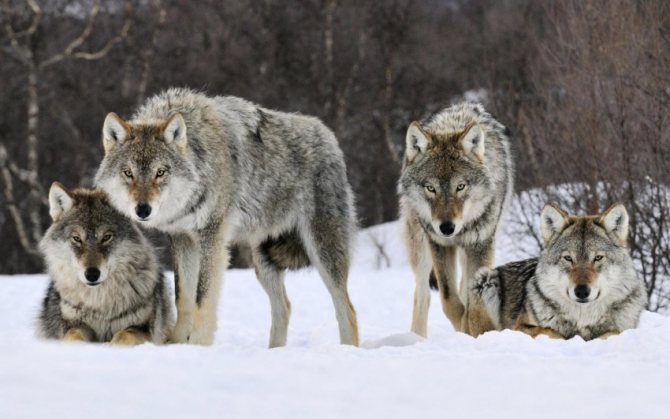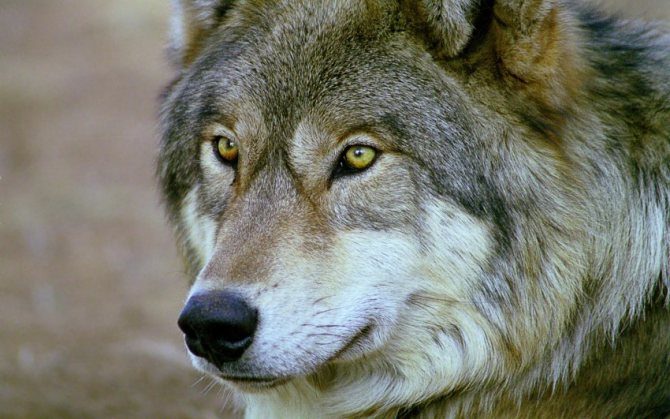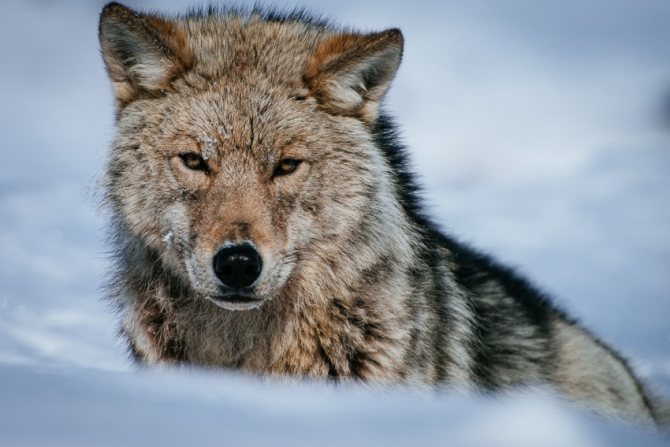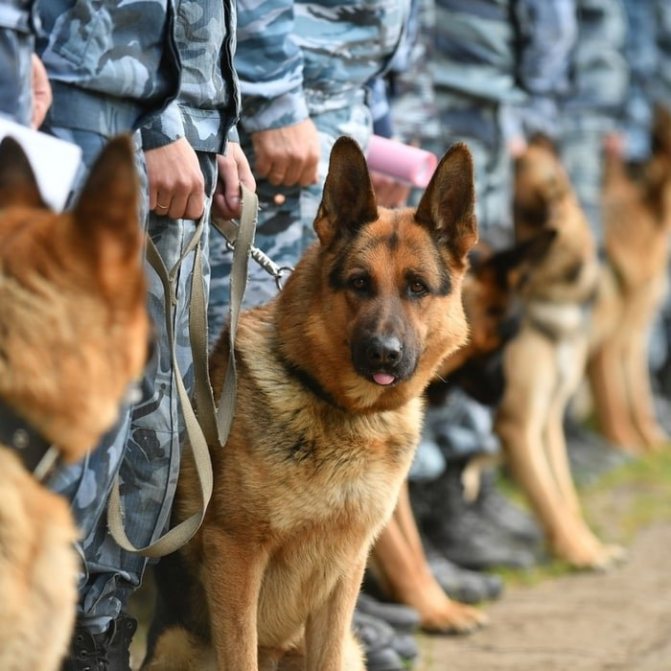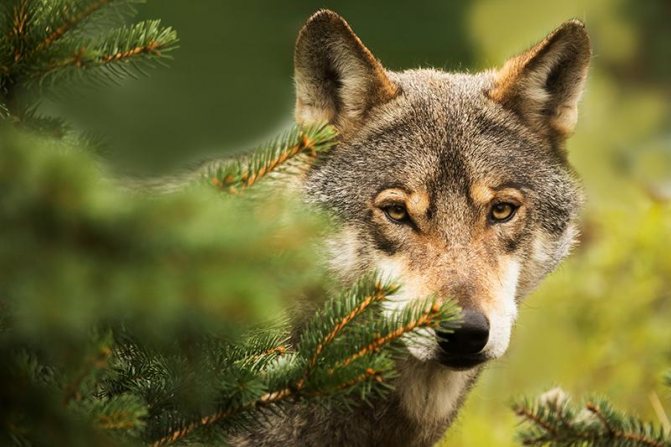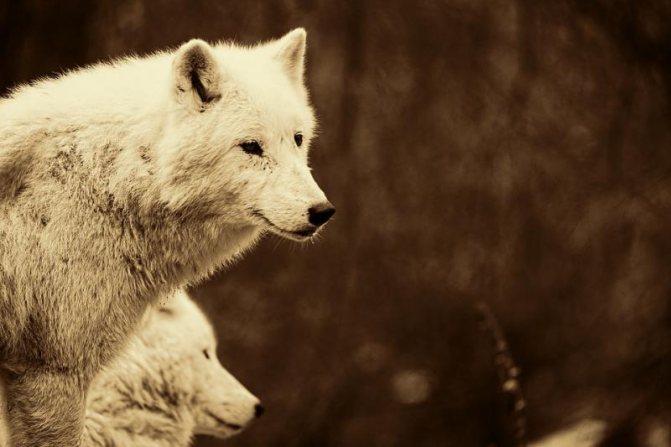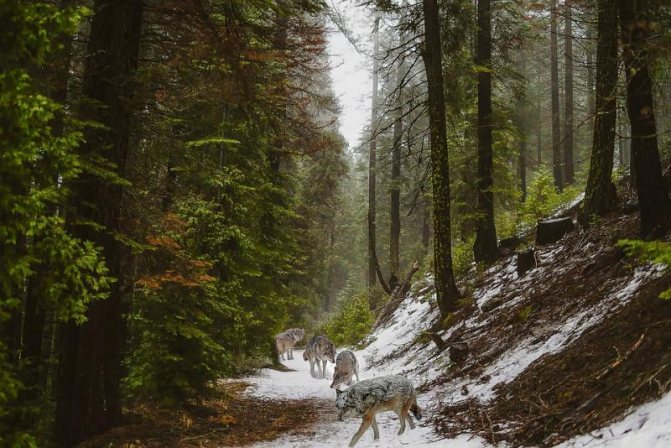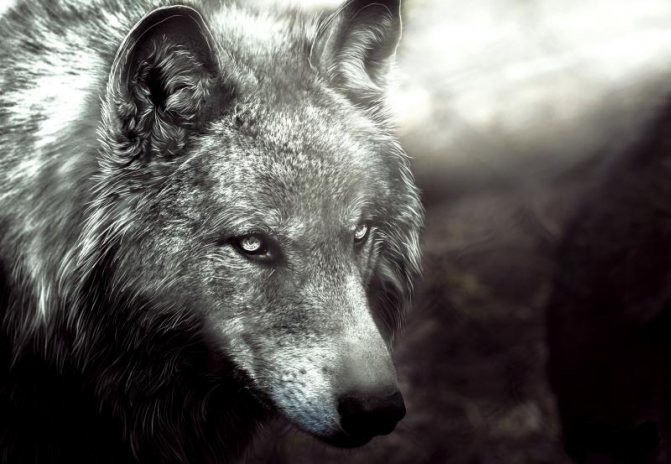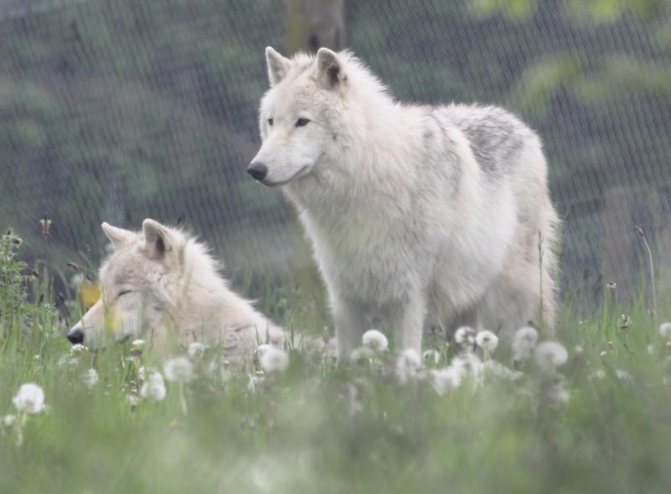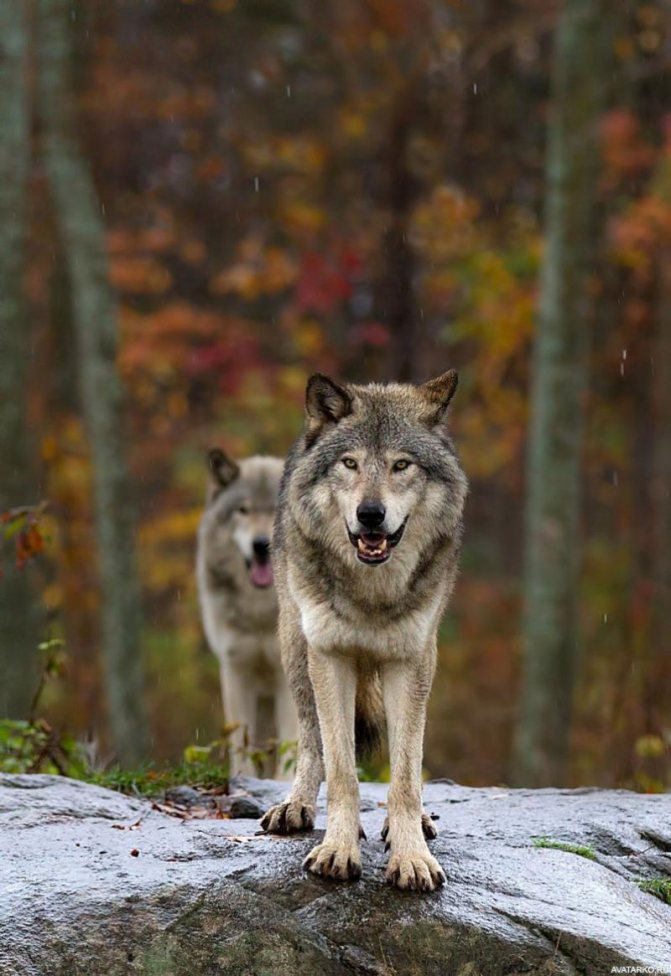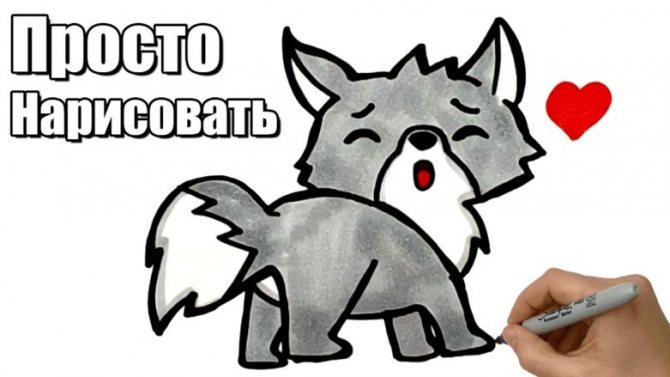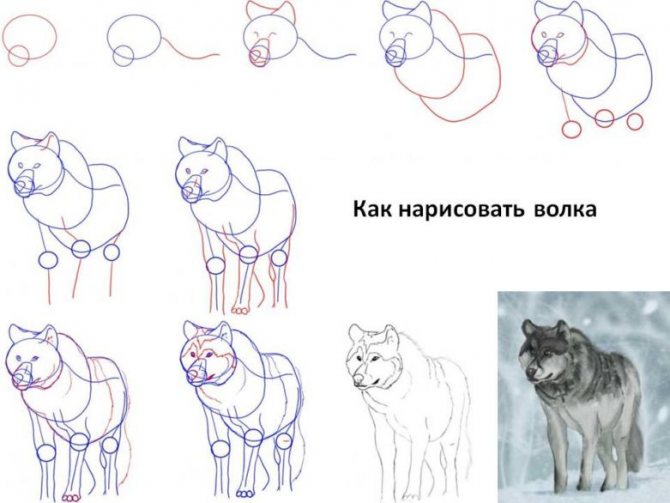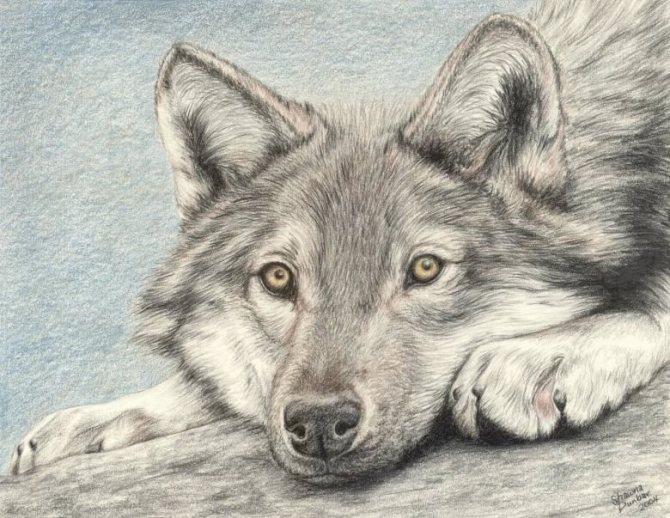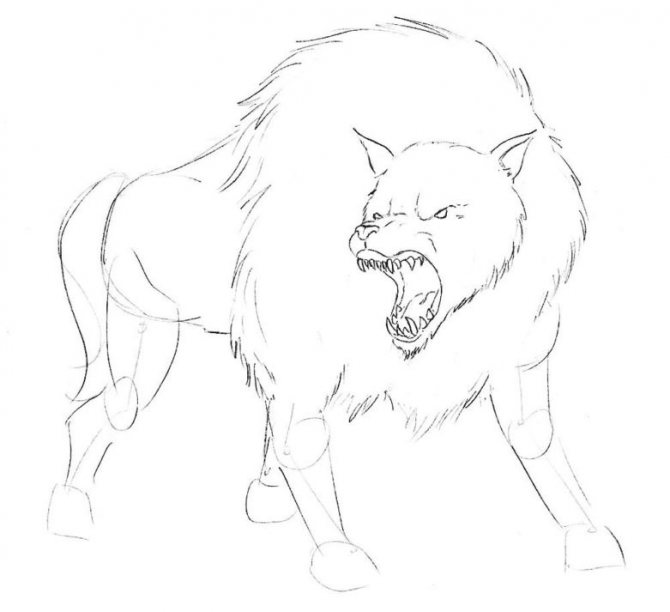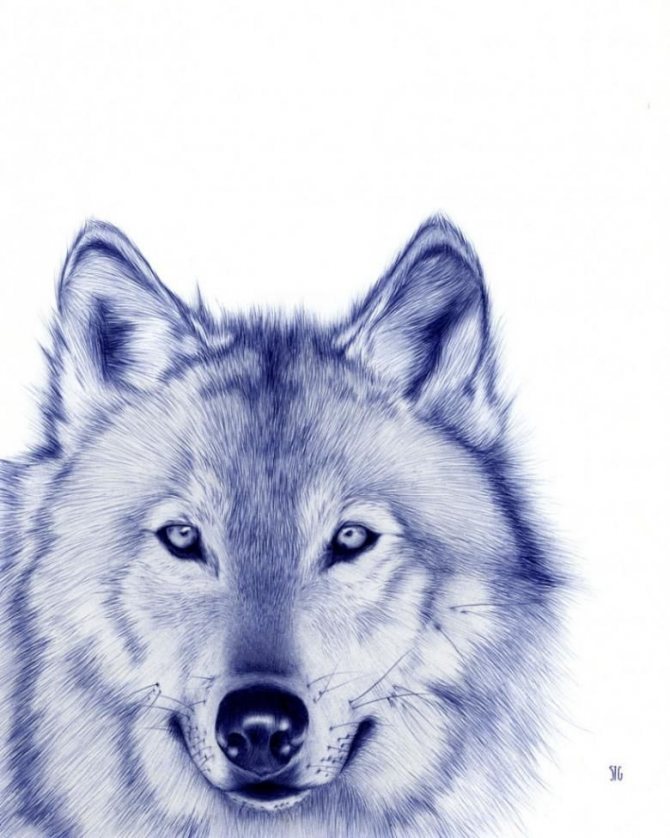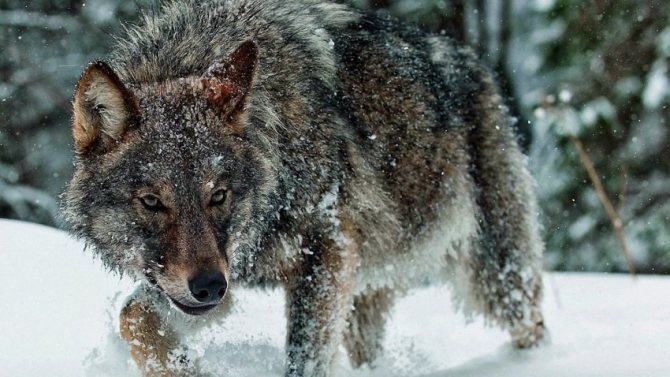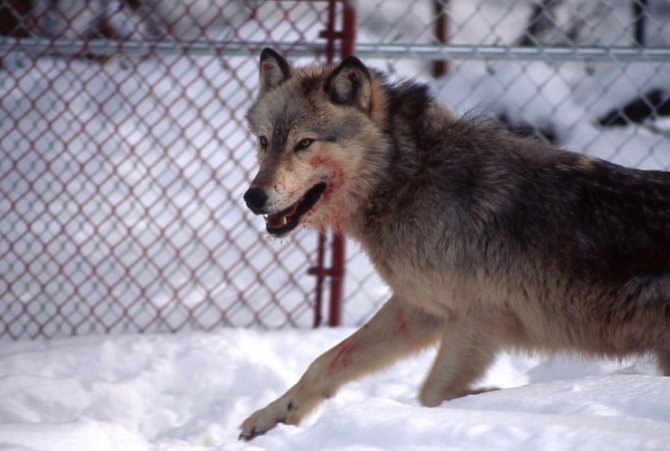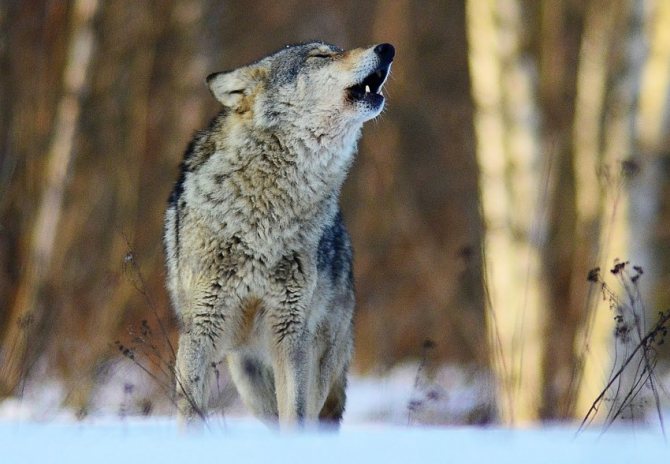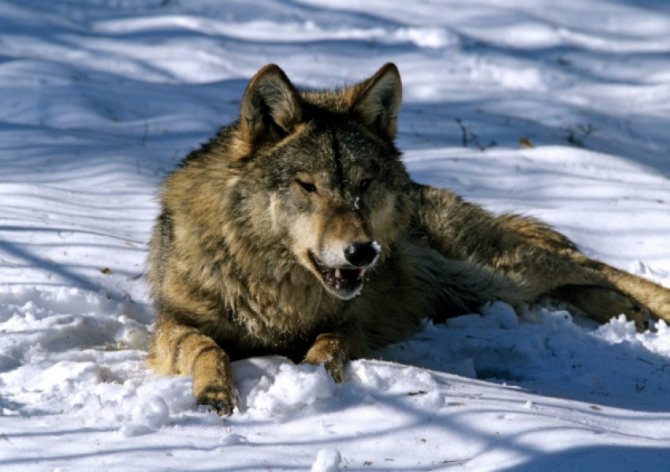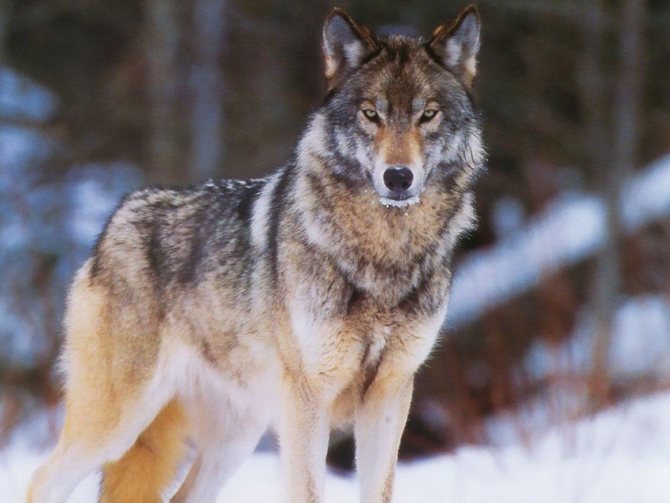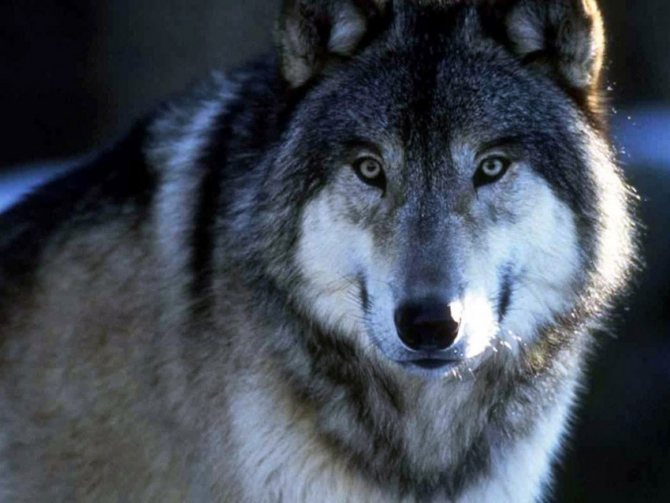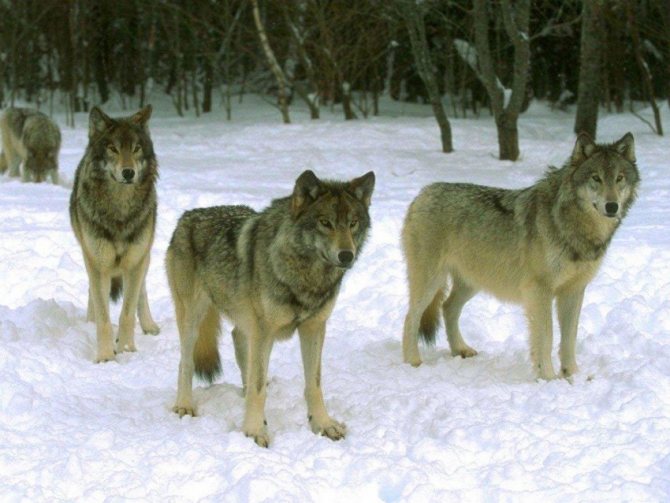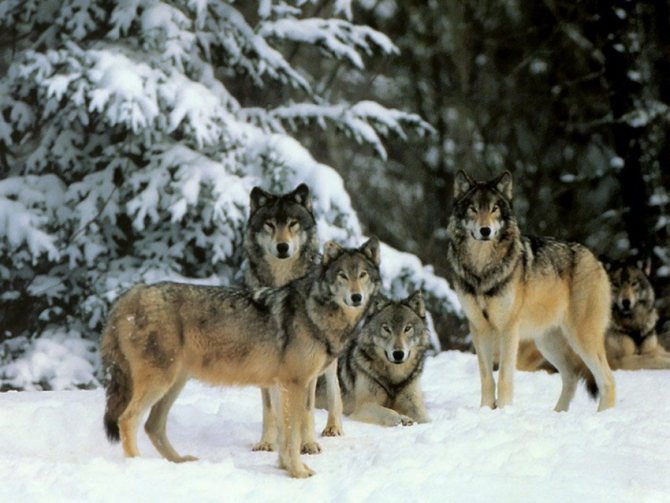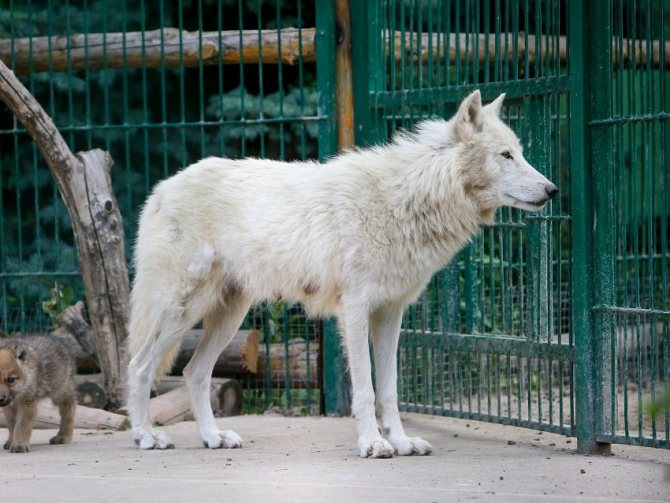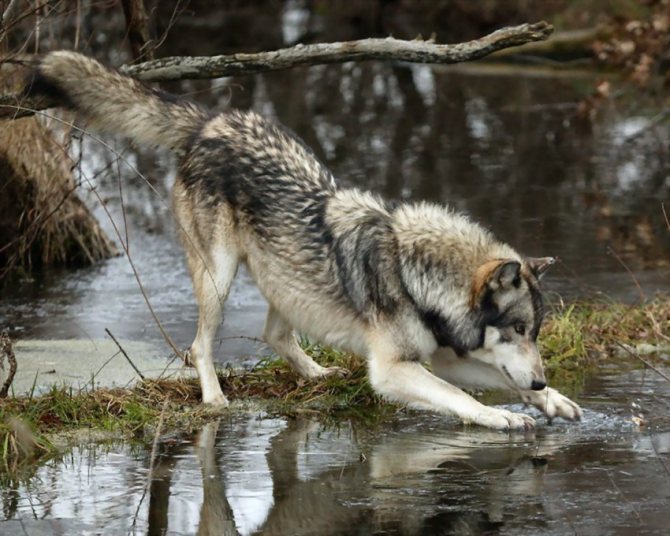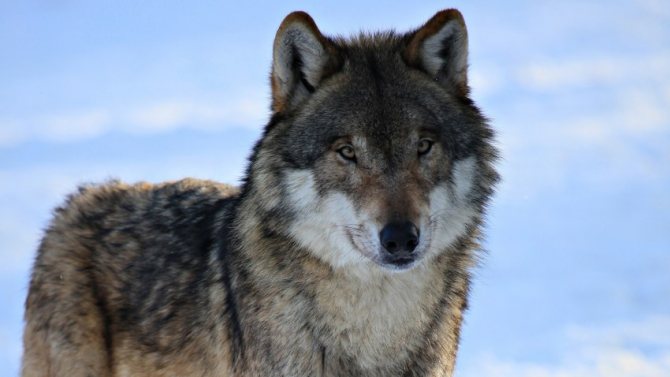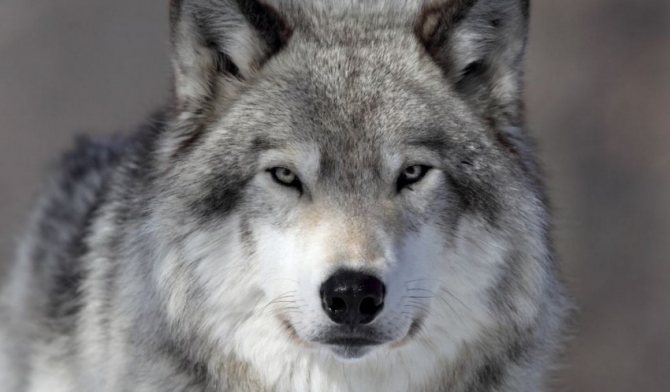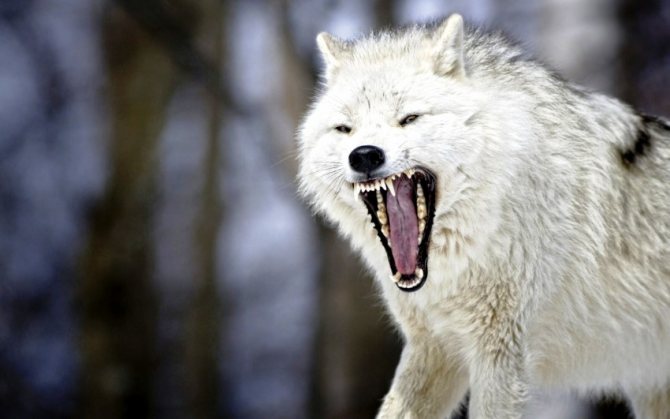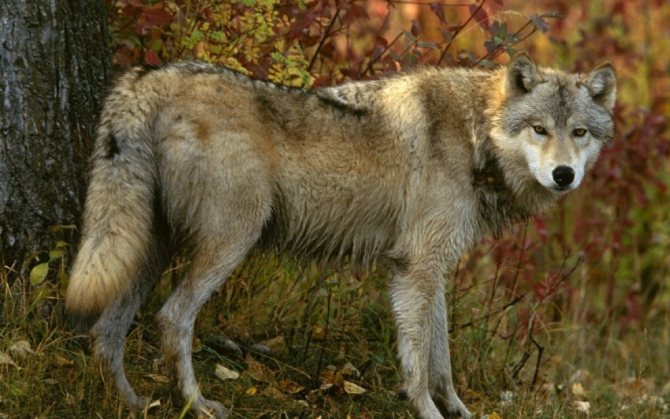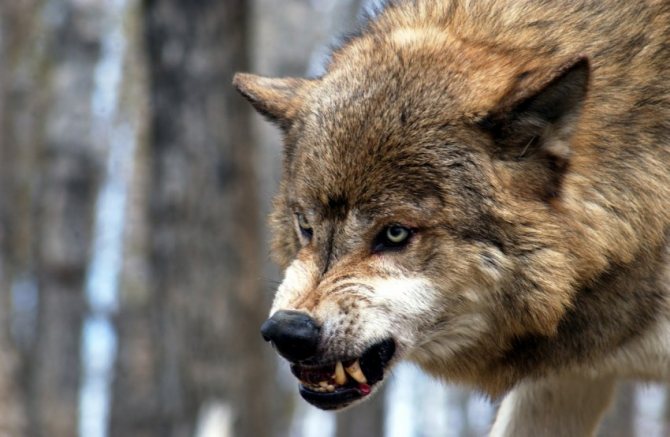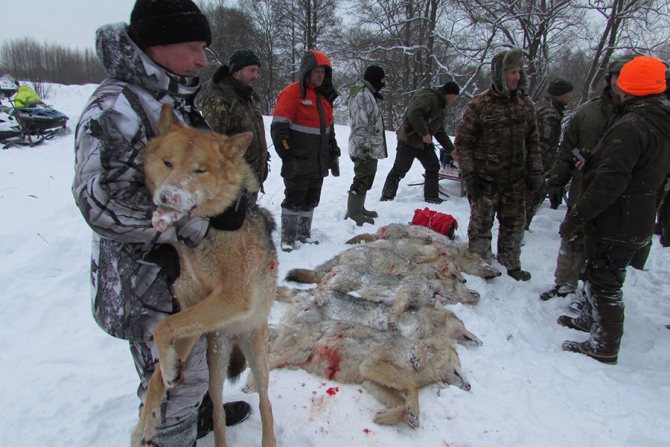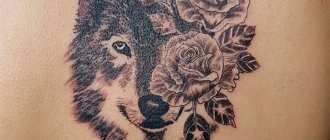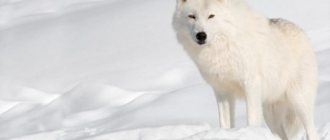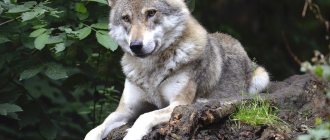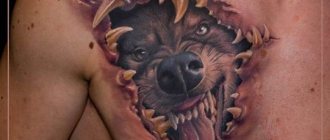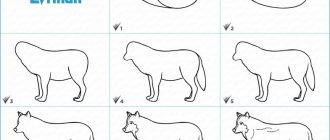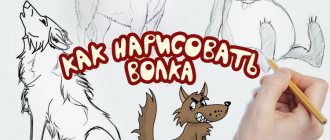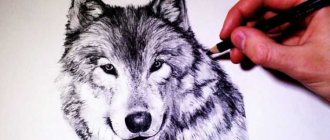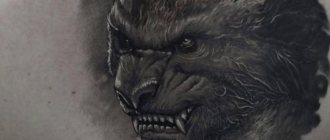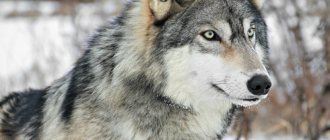The wolf is a formidable predatory animal, which, along with coyotes and jackals, zoologists classify as a member of the wolf family. Genetic studies have proven that wolves are the progenitors of dogs. Yes, yes, all of our pets, from the Chihuahua to the St. Bernard.
In this article, we'll talk about this predator and explain what color the wolf's eyes are and how and why they glow in the dark.
What it looks like
And here is a description of the wolf's appearance: the beast resembles an ordinary large dog with sharp ears. It has a rather massive, broad muzzle that stretches forward and has a kind of sideburns on the sides. Wolves, like dogs, according to scientists, are able to "demonstrate" by changing the position of their ears and tail, as well as their mouth and lips, at least 10 mimic expressions. These include anger, anger, wariness, joy, fear, calm, threat, etc. For example, the raised tail and ears indicate the animal's wariness or even pronounced aggression.
The movement of the tail is one of the indicators of the state of the wolf. In its usual state it is rather long and thick, and most often it is lowered down. The tail is "broom" - so say hunters about it.
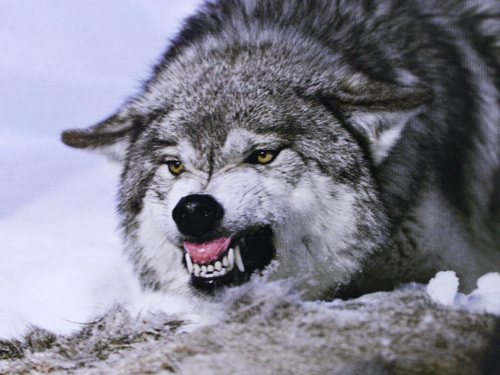
The teeth of this animal are a formidable weapon. The jaw, only the upper, not counting the small and normal molars, contains six incisors and two fangs. The latter are assigned the most "responsible" role - they are designed to grab and hold the victim, experiencing a huge load. Usually wolf tusks are sharper than those of a dog and slightly curved backward.
Root teeth are also quite strong - they are also responsible for grinding the bones of their prey. For example, a well-starved Eurasian wolf can easily eat a captured hare along with its skin and bones.
The color of wool of this forest-dwelling predator differs from that of its tundra colleague. Everything is clear here. The colors prevailing in the environment dictate its camouflage: the forest wolf is grayish with a brown tint, tundra wolves are almost white, and desert wolves have reddish fur.
Fur
Wolves have very abundant fur, which consists of two layers: the undercoat and the top layer. The undercoat has the peculiarity of being impermeable to water.
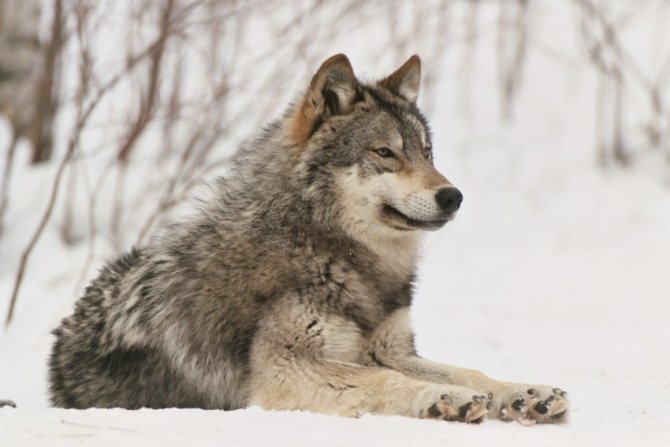

The top layer consists of special hair that does not allow dirt and water to approach the undercoat. Also, wolf hair is almost impervious to temperature, which means that wolves can survive even in the harshest conditions.
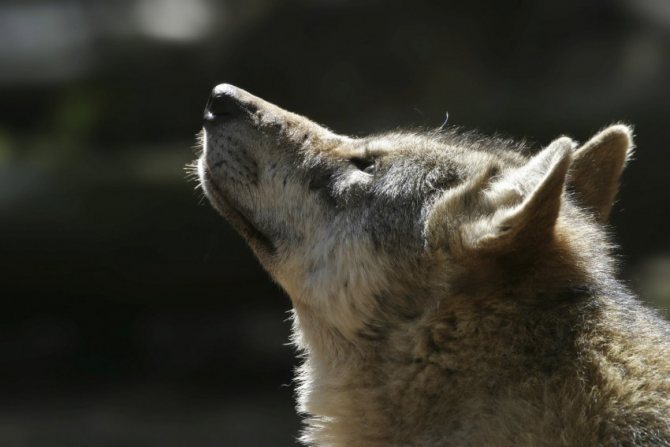

Dimensions
The common gray wolf is a rather large animal for its species. An adult can be up to 160 cm long (we are talking about the length of the body without the tail), with a tail of more than half a meter. The height at the withers is quite decent, up to 90 cm. Such height may be compared only with large-breed dogs such as a German Dane, Irish Wolfhound, Newfoundland or Serbernar.
However, all these characteristics are subject to adjustments introduced by the rule formulated by the German biologist Carl Bergmann: the size of an individual depends on the climatic characteristics of the area in which he lives. The lower the annual average temperature, the larger the animal.
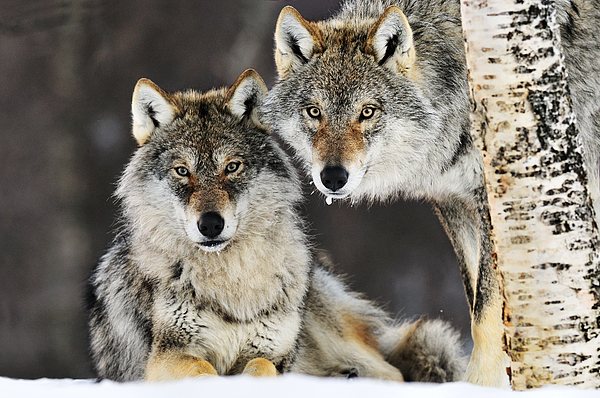

For Alaskan and Siberian timber wolves a weight of 77-80 kilograms is normal. And the minimum height of a wolf from areas located further south can be about 60 centimeters with a body length of just over one meter and weighing over 30 kilograms. The most miniature, if I may say so, is considered a subspecies of the Arabian wolf, the weight of some representatives of which in mature form does not exceed 10 kg.
Characteristics of character and lifestyle
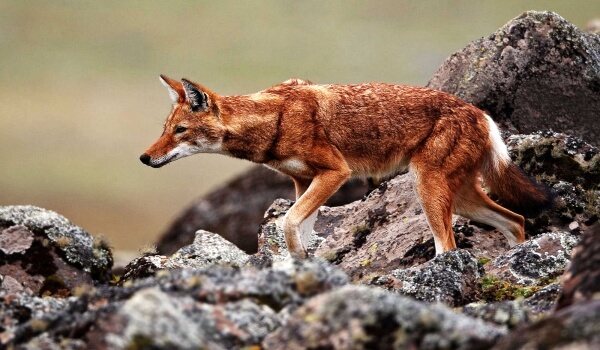

Photo: Red wolf
The lifestyle, character and habits of this species have been studied to the least extent compared to other representatives of this species. It is accurately established that red wolves are not solitary animals. They gather in packs, hunt and raise cubs together. Members of the same group are members of a family. Generally, the number of packs is 6-12 adults. Most often there are no more than two dozen members of a pack of raptors.
They can go hunting both in the dark and in the light of day. All mature individuals of the pack participate in the process of obtaining food. The radius of the territory in which raptors hunt does not exceed 45 square kilometers. Predators have several strategies that they use during the hunt. They can attract ungulates with certain sounds, and line up to chase them.
Another strategy is the distribution of roles. Some members of the pack pursue the prey, others intercept it at the moment of the chase. Caught prey the wolves eat together. After eating, they immediately look for a source of water to quench their thirst.
Where does it live
Interestingly, the wolf's range has long been the second largest after that of humans. Nowadays you can hardly come across this animal in Europe somewhere in Spain, Belarus, Italy, Ukraine and Russia, of course. By the way, the Russian wolf is represented by five species, among which the ordinary gray wolf, as well as red wolf, tundra wolf, steppe wolf, Eurasian wolf and polar wolf.
There are also wolves in the Scandinavian countries, the Balkan Peninsula, and the Baltics. The Asian subspecies inhabits Korea, China, India, as well as Kazakhstan, Afghanistan, Iran and Iraq. But in Japan the wolf is already extinct. This is the sad conclusion reached by zoologists.
Although the wolf population used to be stable in Eurasia and on the American continent, today it has decreased significantly due to human activities. The wolf inhabits places where forests are still dense and human presence is not so felt. A predator is a predator - it does not live well near human settlements, sometimes causing significant damage to livestock. This is especially common if the area's forage base is sparse or unstable.
Habitats
In the past, the habitat area of wolves was second only to humans. Today, this figure has been greatly reduced, but they are still widespread almost all over the world. In Russia these predators live everywhere except the farthest corners of the east.
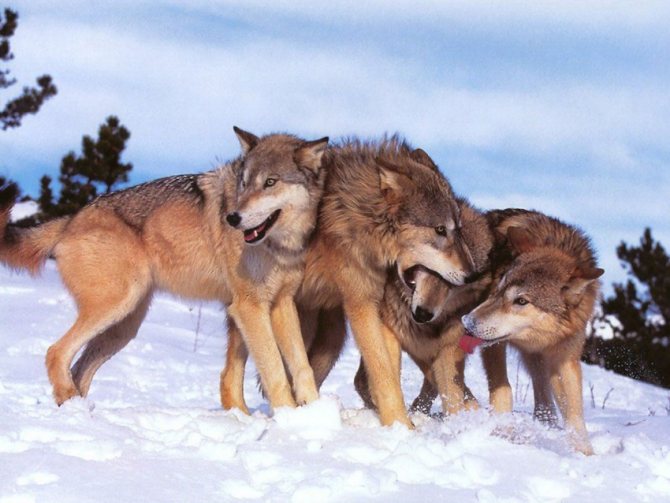

Pay attention!

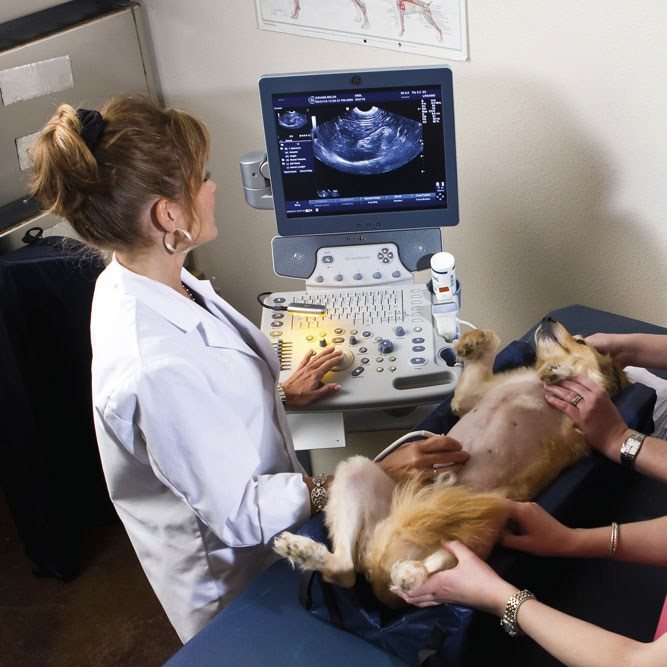
Ultrasound for animals - what is it for?
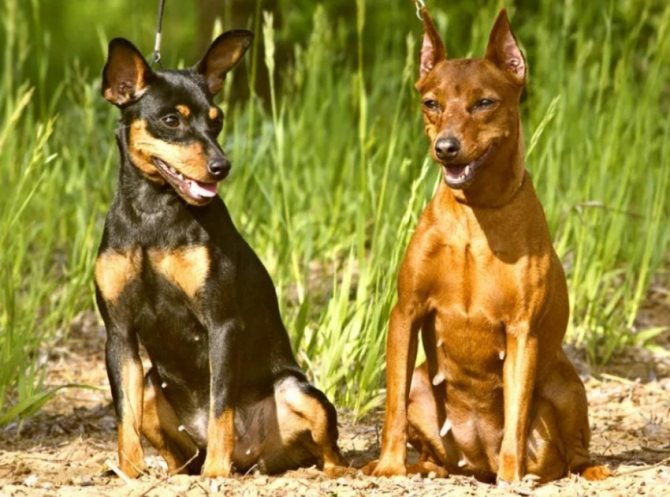
The dwarf pinscher (Zwergpinscher): description and characteristics of the breed, maintenance and care

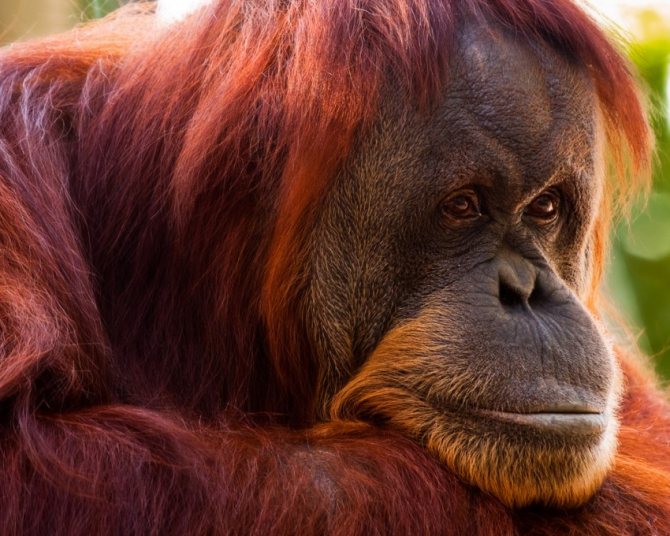
Orangutan - lifestyle, description, environment and habitat. Abilities and features of primates (115 photos)
Wolf eyes
The wolf has excellent eyesight, and it can not be otherwise - because it is a predator, and on how he sees and how quickly to react, depends on his survival. In addition, the animal is most active at night - therefore, it has excellent twilight vision.
It is still unclear whether wolves are color-blind, although the flagpoles when hunting these animals are traditionally made red.
All wolf cubs, like most mammals, are born blind. When babies' eyes begin to open, they are blue in color. But in just 2 to 4 months, the iris color will change and become the usual color for this animal, golden yellow or darker - yellow-brown. The hue and saturation of the color depends on the overall color of the animal. It is believed that the darker the color of the wolf's coat, the lighter and brighter the eyes. However, very rarely, but there were cases when a wolf remained with blue eyes.
Nevertheless, to the traditional question of what color eyes a wolf has, most would not hesitate to answer: yellow. Such a color, generally speaking, is common among animals. An iris of similar or close color is found in cats, foxes, owls, eagles, pigeons, and fish. The lipochrome pigment present in the iris is responsible for this coloring.
As for the romantic image of a white wolf with blue eyes, we are not talking about a wolf, but about a husky. This breed (Siberian Husky) was bred by northern peoples from aboriginal ancient sled dogs.
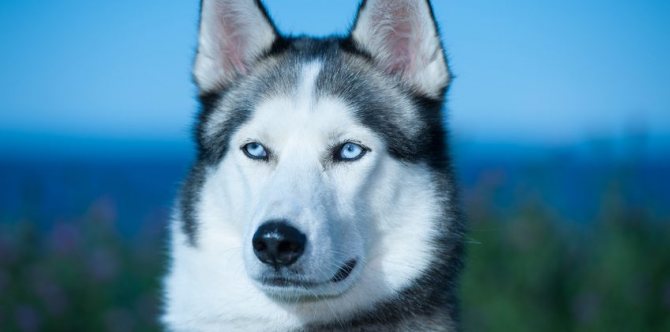

Its eyes, according to the breed data, can be not only brown, amber and green, but also blue. And the color of fur can range from pure white (which is actually rare) to white-gray, wolfish. There are also black huskies.
Sense organs and habits
The wolf has a superbly developed auditory apparatus. The predator cannot boast of very good eyesight. But a wolf has an excellent sense of smell. With it, the predator can smell its prey, even at a distance of several kilometers. Wolves constantly divide their territory by marking it with urine and fecal matter.
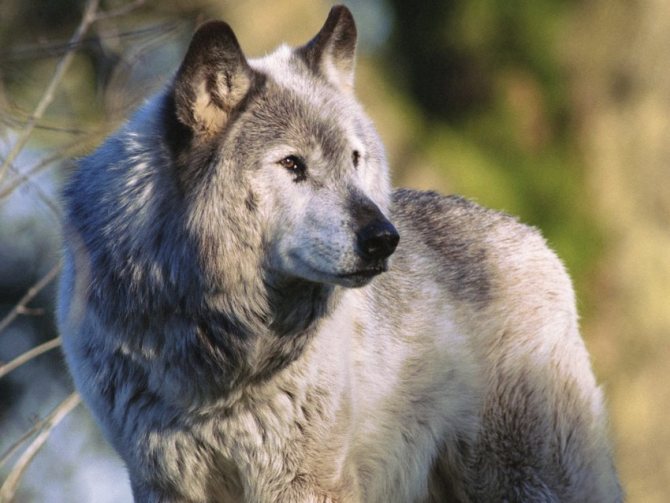

Wolves can make a lot of different sounds, from howling to grunting. Also, there is a legend that wolves are always howling at the moon. This is not entirely true. Wolves howl to indicate their location and to drive people or other predators away. But they only do this if they are in a pack. Wolves that walk alone do not do so to avoid getting into trouble.
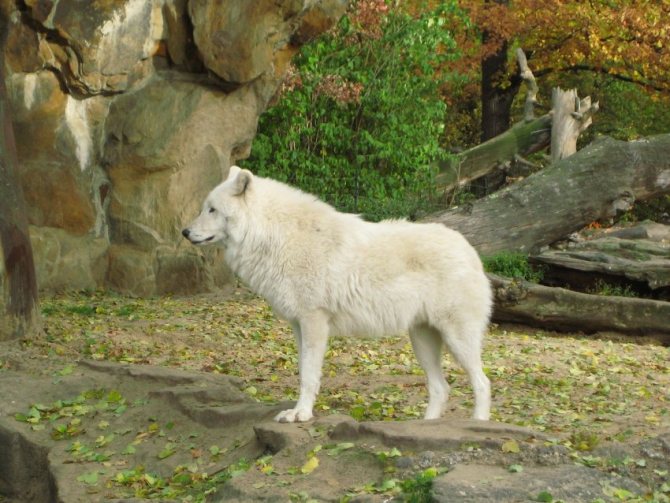

These predators have very well developed mimic abilities as well. Thanks to them, you can understand the emotional state of the wolf. It is largely similar to the facial expression of a dog.
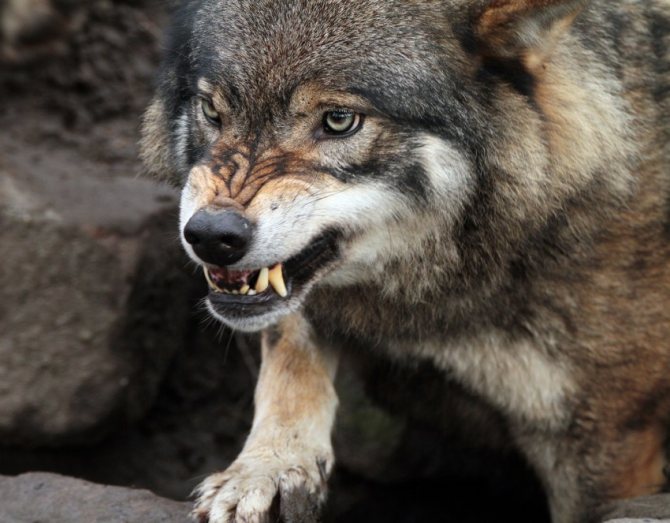

The magic of the gaze
For most people, the direct fixed gaze of a large animal, directed at him, is perceived as a threat. This is most likely due to ancient perceptions, when human survival depended solely on the reaction and speed of running. Even today, the wolf is considered a dangerous and formidable predator, and an encounter with it in a deserted place and without weapons is fraught with the worst complications. Although it is believed that wolf aggression is rarely aimed directly at humans.
The well-developed eyebrows make a wolf's eyes deeply set and its gaze squinted. This, too, does not add to a person's presence of mind. It is not for nothing that in medieval Christian concepts the wolf was considered an accomplice of the devil, and his appearance was an expression of heresy, cunning and malice.
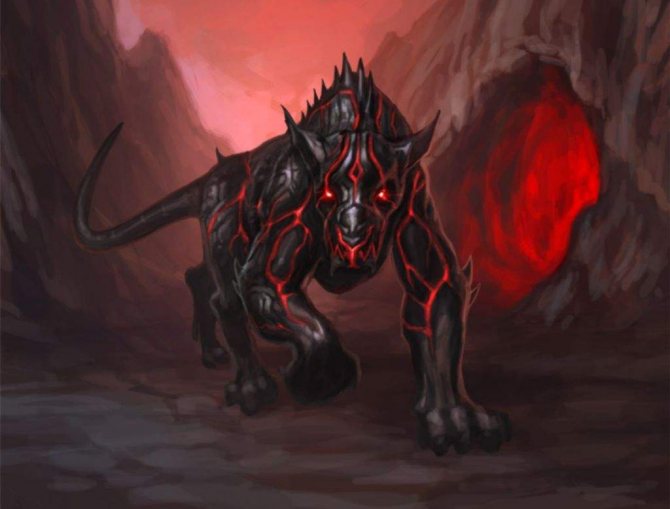

The image of the "infernal" wolf stealing souls with eyes that burn with fire was highlighted by philologist and historian Jacob Grimm in his work "German Mythology". These were the mythological concepts of the ancient Germans. A researcher of Slavic folklore Afanasiev spoke about this demonic image, mentioning the proverbs:
I would say a word, but the wolf is not far away.
Man-werewolf, werewolf, werewolf, lycanthrope, also came to modern art from mythology.
What does he eat?
Wolves eat depending on local conditions. Usually it's animal food. Wolves, thanks to their excellent sense of smell, can easily understand the state of their prey.
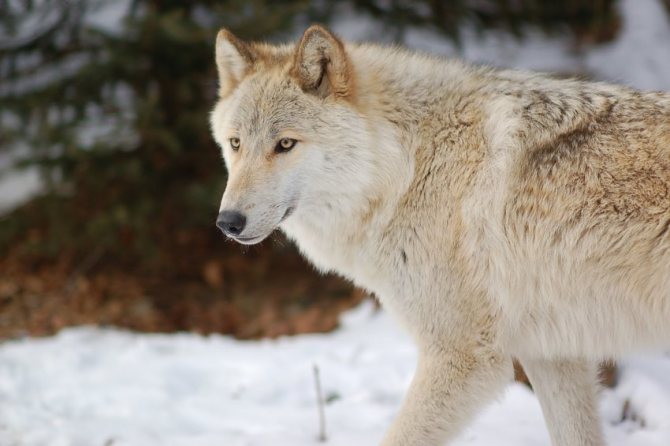

Often these predators attack the wounded, sick or old animals. Large animals are attacked by wolves only in packs. These are buffalo, deer, and so on.
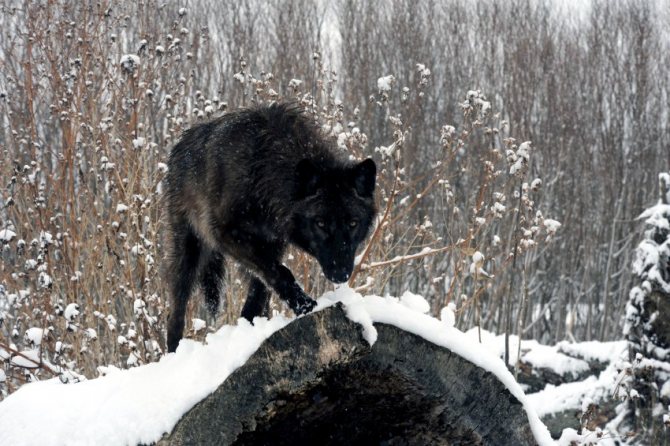

Population and status of the species
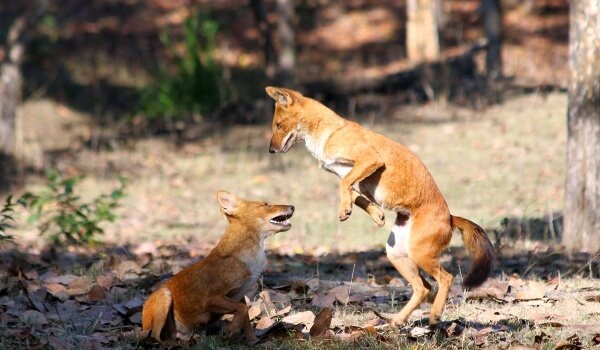

Photo: Red wolf in Russia
To date, the red wolf is officially recognized as an endangered species. On the territory of the Russian Federation, he is practically destroyed. The main mass of representatives of the family of canine predators is concentrated in India.
In this country, it is even allowed to hunt the animal with the purchase of a license. A total of ten subspecies of the red wolf have been identified. Two of the ten are almost completely wiped out - the East Asian and West Asian. Kashmir, Lhasa, Kumaon, Nepal and Bhutan are also extremely rare.
No more than 2.5-3 thousand individuals live in natural conditions today. Their main mass is concentrated in the territory of India, Mongolia.
"Sho! Again?"
The famous phrase, which has become a winged phrase, instantly recreates the image of the old, but generally mean-spirited and very attractive wolf from the cartoon "Once upon a time, there lived a dog...".


The description of the process will help you understand how to draw a wolf to a child - you can even learn together with him, because such a drawing is much easier than strict sketches with correct shapes.


- First we draw the head. We depict a horizontal oval with wide ends. We draw a vertical line in the center. The horizontal straight line is shifted down a little, so that at the top we have more space than at the bottom.
- On the horizontal line draw vertical ovals - the eyes of a wolf. Points mark the pupils.
- At the bottom of a rectangle with rounded corners - the nose. The tip of the nose is depicted in the form of the letter "M", stretching it a little.
- Under the nose sharp angle upwards, draw a triangle. The top and ends rounded.
- On the sides below irregular squares are drawn, smoothing the corners - this will be the eyebrows. Under them place the lower jaw.
- On top of the head prisyvayut ears with triangles.
- Draw all the details of the muzzle. Auxiliary lines erase.
- Draw a big pear shape under the head, extending downward. Our wolf is sitting, so from below we draw back paws to the body - two elongated ovals, which we draw, making it more similar to paws turned in different directions.
- Now draw front paws - draw two parallel lines, ending with circles. Draw paws more detail.
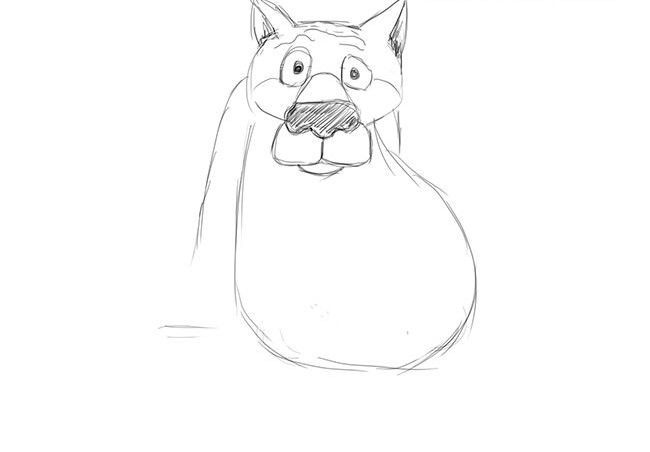

Color the wolf. The outline can be traced with a felt-tip pen or darker color, inside sketch in soft gray. Eyes yellow. Make the lower part of the muzzle, chest and belly lighter.


Add wrinkles, woolly hairs, whiskers and chin hairs. Backgrounds can be done as you see fit.
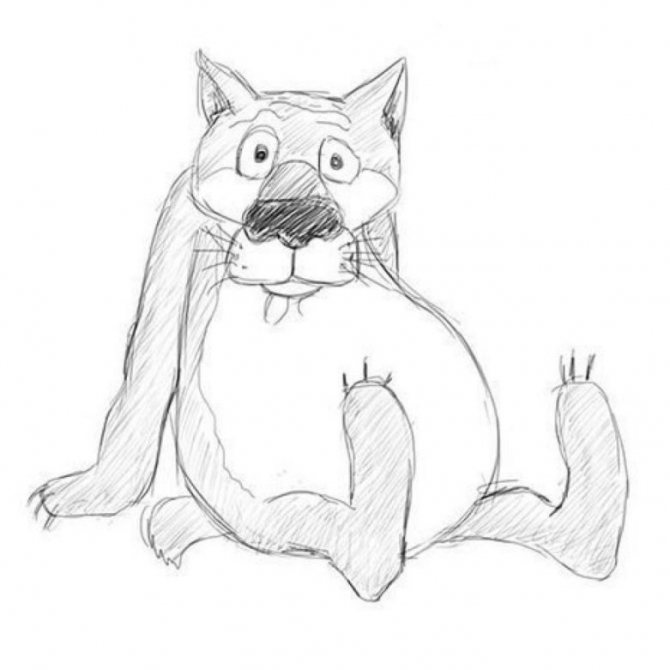

Social structure and breeding
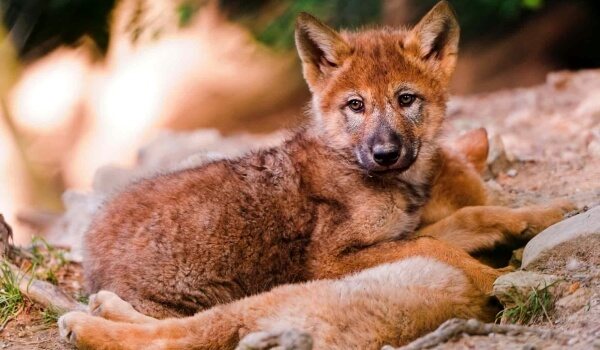

Photo: Red wolf cub
Red wolves are known for their constancy and devotion to family. They form families in which they exist for their entire lives. Male and female raise and nurse their young together. They are capable of giving birth year-round. However, according to statistics, cubs are born most often in winter or early spring. After mating, the wolf cubs bear cubs for about two months.
Before they are born, she prepares the den. The cubs are born helpless, blind, in the number of 5-8. Their appearance is very similar to that of German shepherd pups. Ten to 14 days after birth, the babies begin to see. They grow rather quickly and become strong. In 1.5-2 months after they are born, the cubs begin to bark. About the same period, a wolf starts feeding her cubs with the remains of meat food, which she regurgitates after her meal.
During the period of cubs' growth, the pack does not go far from the den even while hunting. At three months of age, the young move out into the open space outside the den for the first time. The young learn the way of life very quickly and adopt the habits of the adult members of the family. However, the adult wolves take a long time to protect them. When the young are seven, eight months old, they are allowed to take part in the hunt. By about one year, the offspring reach sexual maturity.
Male and female wolves are equally involved in rearing the cubs. They are known as caring and very anxious fathers. They protect the cubs. They play with them. The average lifespan of a red wolf in natural conditions is 7-10 years. In captivity, life expectancy increases to 15-17 years.

